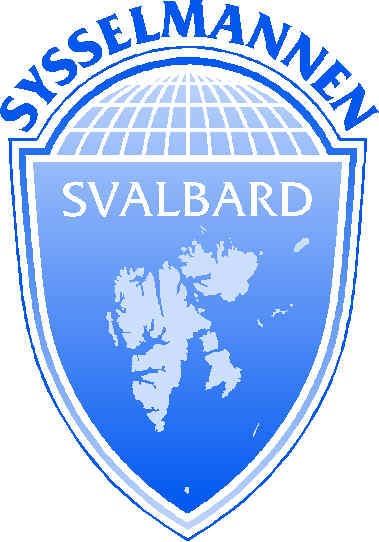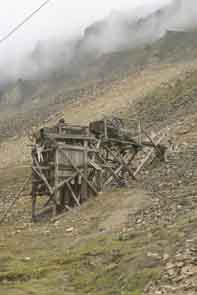
It is ruled by the governor (The Sysselmann), who is elected.
Spitsbergen is an archipelago in the Norwegian Sea, approx. 565 Km north of Norway. The group contains three bigger and some smaller islands between 71°-81° N & 10°-35° E. The area is 63.000 Km² (about the size of Ireland), and 60% is covered by glaciers. This was not always the case 360 - 60 million years ago Spitsbergen could be found at the equator in the Atlantic Ocean. Slowly the archipelago moved to the north.
Spitsbergen got its name from the Dutchman Willem
Barentsz in 1596, when he was on his way to Novaya Zemlya, searching for a
northern route to Asia.
Although the name Spitsbergen (or Spitzbergen in German) is wellknown, the
Norwegians prefer Svalbard which means 'cold coast'. The earliest known time
this name was mentioned, is in an Icelandic book from 1194, it is not sure that
this is really todays Svalbard. When the Norwegians talk about Spitsbergen, they
only mean the big western inhabited island.
Willem Barentsz thought it was a piece of Greenland, therefor the Danish thought
it was theirs. After a couple of years the whalers mapped the whole coastline
and the battle about the whales started. Whales had a great value because of
their 'blubber'
In 1906 the American buisiness man called John Munroe Longyear founded a mining company in Adventfjorden. This led to Longyearbyen and the Store
Norske Spitsbergen Kulkompani A/S (SNSK). Today there is still mining in Mine nr. 7 & Sveagruva. Also there is a mine in Barentsburg, by
a Russian company Trust Arktikugol.
| Remains from before 1946 are cultural heritage, this means
that they have to be protected from damage. Examples are remains of mining and whaling. |
 |
Spitsbergen has approx. 2500 inhabitants, (roughly the same as the number of Polar Bears in the Barentz Sea). Longyearbyen is the capital. Barentsburg with its coalmines comes second. 450 people from Russia and the Ukraine live there, working for Trust Arktikugol. It is a Russian enclave with its own powerstation, hospital, hotel, sportshall and even greenhouse and a farm with pigs and cattle. The Russian consulate can be found in Barentsburg.
If you want to do some shopping, you have to
do it in Longyearbyen. There is a real shoppingmall. In Ny Ålesund there is a little
shop, but it only sells some basic items.
Souvenirs can also be bought in the Russian towns Barentsburg & Pyramiden.
Annex 1
Treaty between Norway, the United States of America, Denmark, France, Italy, Japan, the Netherlands, the Great Britain and Ireland and the British Dominions beyond the Seas and Sweden relating to Spitsbergen of 9 February 1920
The Treaty has been ratified by all of the saidsignatories and the instruments of ratification have been deposited at Paris on the following dates: the Netherlands 3 September 1920, Great Britain and Ireland 29 December 1923, Denmark 24 January 1924, the United States of America 2 April 1924, Italy 6 August 1924, France 6 September 1924, Sweden 15 September 1924, Norway 8 October 1924, Japan 2 April 1925.
The Treaty enetered into force in its entirety on 14 August 1925.
As of 14 September 1999, the following states are parties to the Svalbard Treaty: Afganistan,Alabania, Argentina, Australia, Austria, Belgium, Bulgaria, Canada, Chile, China, Denmark, the Dominican Republic, Estonia, Egypt, Finland, France,Germany, Greece, Hungary, Iceland, India, Italy, Japan, Monaco, the Netherlands, New Zealand,Norway, Poland, Portugal, Romania,Russia, SaudiArabia, Spain, Sweden, Switzerland,South Africa, the United Kingdom, the United States of America and Venezuela
Article 1
The High Contracting Parties undertake to recognize, subject to the stipulations of the present Treaty, the full and absolute sovereignty of Norway over the Archipelago of Spitsbergen, comprising, with Bear Island of Beeren-Eiland, all the islands situated between 10° and 35° longitude East of Greenwich and between 74° and 81° latitude North, especially West Spitsbergen, North-East Land, Barents Island, Edge Island, Wiche Islands, Hope Island or Hopen-Eiland, and Prince Charles Forland, together with all islands great or small and rocks appertaining thereto.